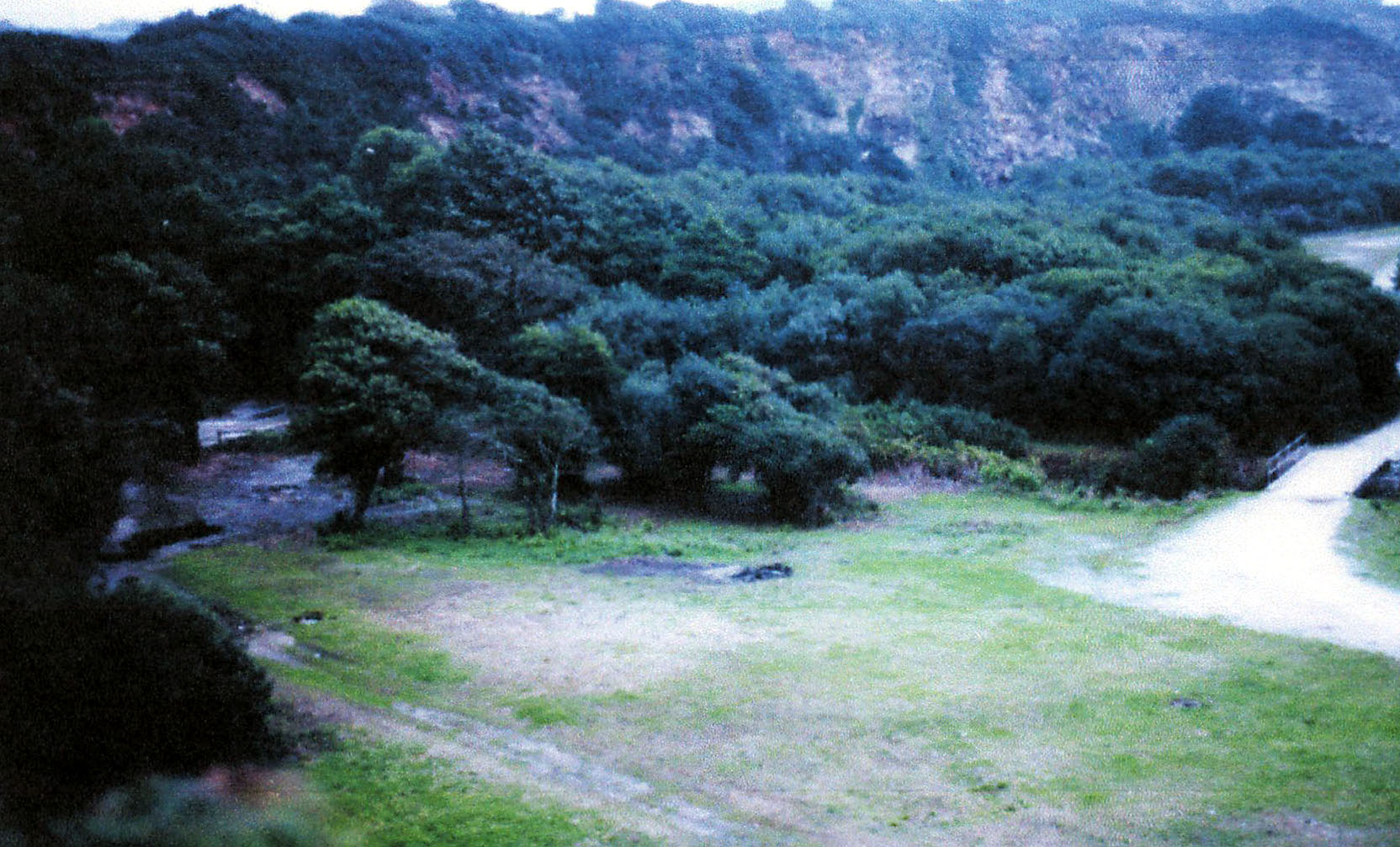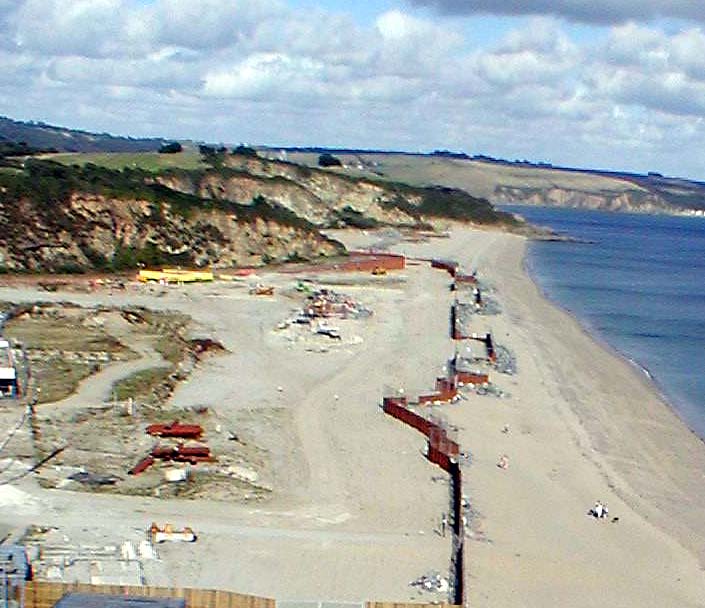





|
|
|
|
|
|

 |
 |
||||||||||||||||
|
|
|||||||||||||||||
|
|
||||||
12.04Reynolds.jpg?605) |
|
This image from the DG Reynolds collection shows vegetation all along the beaches to the right of the buildings |
A.L Rowse, once described as "the greatest Cornishman of the twentieth century", was born and brought up in a village which is now part of St Austell and knew the Carlyon Bay beaches well as a child. In the first volume of his autobiography "A Cornish Childhood", he describes family picnics on "that magnificent stretch of white glistening sand almost a mile long, with the red-brown, tin-and-copper stained cliffs enclosing it ...".
For generations people have been using the beaches, like A.L. Rowse, for recreation. But the only part actually built on over the years has been Crinnis. Various leisure facilities led eventually to the Cornwall Coliseum and its satellite buildings, including food outlets and a swimming pool. Those buildings were delapidated even before Ampersand bought the site and needed updating or replacing as Carlyon Bay Watch has always recognised. But that area of Crinnis, well back from the shoreline where it had no need to be defended by a sea wall, is the only area which could be called 'brown field'.
The Ramblers' Association said in 2003: "Away from the immediate area of Carlyon Bay there is a perception that this scheme is just 'redeveloping brownfield' (Old Coliseum) land, but that is less than one-third of the project - the rest is ravaging a naturally beautiful beach in a unique setting".
"MOSAIC OF WOODLAND, SCRUB AND OPEN HEATH" - DEVELOPER'S REPORT
Shorthorn beach once had a mixture of heathland, woodland, wetland and grassland fronted by sand dunes and backed by exposed steep cliff faces. This mix of habitats in a south-facing coastal location is unusual in Cornwall and was once deemed of importance by lepidopterists
 |
|
The trees and vegetation and footpaths on Shorthorn before the bulldozers moved in |
In a survey carried out at Carlyon Bay in the mid-1990s by Adrian Spalding, 27 notable species were found. "The interest of the site lies mainly in the juxtaposition of widely different habitats and the moths that live there. I estimate that there are 32 resident macro-moths found in Cornwall, which are restricted to coastal areas. Of these 18 (56%) have been recorded at Carlyon Bay, making it a very important coastal site for Lepidoptera in local terms." (Have a look at the Cornwall Moth Group website which even now recalls the sightings at Crinnis).
This "very important coastal site" has now been destroyed or damaged, with the whole of Shorthorn buried under building material, rocks, rubble and sand. The river, once enjoyed by walkers and ecologists as it wound through this natural habitat, has been diverted and confined between rocks and concrete.
The importance of these beaches was recognised in the past by statutory and regulatory bodies. Typical was the policy adopted in the 1980s by South West Water when installing a new sewage treatment works at Par Moor. Effluent had to be discharged to the sea through pipes underground from Par Moor reaching the beach at Polgaver at the base of the cliff. From there the pipes were buried under the beach and out under the sea bed to the outflow terminal three-quarters of a mile out to sea. A large area of plants and trees at Polgaver had to cleared and before work started teams from the Forestry Commission and the Trust for Nature Conservation listed the types and and sites of all shrubs and trees affected. When the work was finished the water authority had to replace every shrub and tree with new specimens in their original positions.
Even Ampersand's own consultants has acknowledged that Shorthorn "was much more natural in appearance lacking the built environment that dominates Crinnis Bay .. The main interest ... was the mosaic of woodland, scrub, and open heath habitats to the east of the Sandy River." (Environmental Impact Assessment prepared by Wardell Armstrong International). It went on to say that Polgaver supported some of the most "natural" habitats on the site with woodland of grey willow and alder covering the majority of the bay. It shows "the classical succession from fixed dunes to low scrub, scrub and semi-mature woodland".
DESTRUCTION OF SHORTHORN
 |
|
August 2006 - Shorthorn has been ripped up and its habitats destroyed |
That woodland at Shorthorn exists no longer and it's not only Carlyon Bay Watch members who are horrified. Richard Marsh wrote in "Wild Cornwall" magazine in 2004. "Ground clearance works were carried out by the spring of 2004 so that these habitats were destroyed, to be replaced with holiday apartments and a hotel, which appears to go against everything the developer company claims in relation to nature. This is clearly the wrong type of development in the wrong location and the Cornwall Wildlife Trust is strongly opposed to it."
Although Polgaver has not been spoiled in the same way, it has been closed off by fencing erected by the developer. It was an area once accessible to the public, and especially popular with naturists. Here, drilling rigs destroyed wild orchids and a small wood was cut down east of the river. Heavy equipment has erased shrubs and plants and large quantities have been burnt. Tonnes of rocks have been dumped and false sand dunes of building material occupy large areas of the old natural habitats. The area has become an eyesore.
In February 2005 several of the huge lengths of steel piling were recovered from the sea where the October storm had torn down over one hundred yards of the "temporary" sea defences. What damage did they cause in the weeks they were left on the sea bed ?
Tens of thousands of tonnes of rocks, some weighing over 10 tonnes each, were dumped into the sea from the delivery barges and then recovered with large mechanical tracked ‘caterpillar’ vehicles. This process went on for many weeks and must have damaged all and every living thing on the sea bed and on the shoreline area.
The initial work on the proposed sea wall together with clearance work on the areas once covered by plants and trees means a varied coastal habitat has been lost.
The developer claims in its publicity "every measure has been taken to preserve and protect the character of the landscape" - CBW does not believe they have done much except destroy that very character.
For general enquiries email Carlyonbaywatch@aol.com
